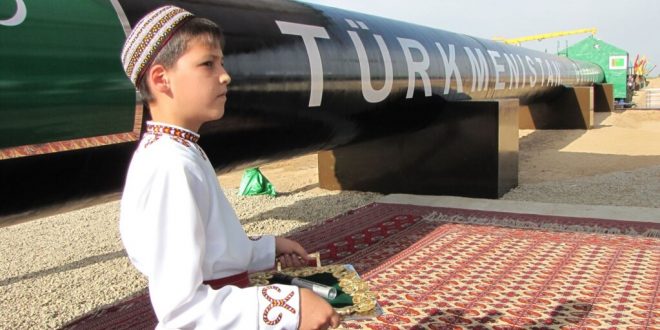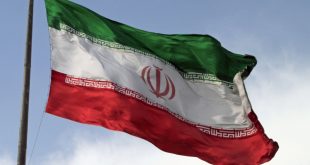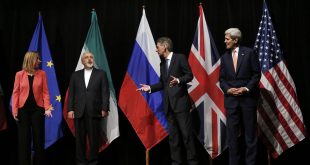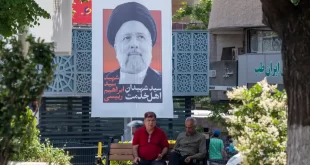With its massive oil and natural gas reserves, Turkmenistan’s economy is heavily dependent on foreign exchange earnings from the export and sale of these resources. Given this, the country’s economic stability is tied to Ashgabat’s foreign policy and cooperation with its neighbors, including those territories located in the path of target markets (Iess.ir, February 8, 2021). Iran, in particular, has always intended to take advantage of its location for oil and gas swaps with the countries of the Caspian Sea and Central Asia in hopes of becoming a hub for regional energy trade, though various sanctions have caused some energy swap contracts between Turkmenistan and Kazakhstan to be canceled (Shana.ir, November 28, 2021).
In December 2021, after the bilateral meeting of Iranian President Ebrahim Raisi and Azerbaijani President Ilham Aliyev on the sidelines of the Economic Cooperation Organization summit, an agreement was signed by the oil ministers of both countries, according to which 1.5 to 2 billion cubic meters (bcm) of gas will be delivered annually from Turkmenistan to Azerbaijan, transferred via Iranian territory. According to the agreement, Tehran will receive gas exported from Turkmenistan at the two countries’ shared border and, with it, will meet part of the gas needs of Razavi Khorasan, North Khorasan, South Khorasan, Gilan and Semnan. Then, Iran will deliver the same amount of gas to its border with Azerbaijan (Yjc.ir, December 12, 2021). Iranian Oil Minister Javad Owji noted that the total annual volume of these gas swaps will reach 1.5 bcm. Owji also proclaimed that Iran is willing to engage in a similar trilateral arrangement with Turkmenistan and Armenia (Shana.ir, September 13).
Gholam Abbas Arbab Khales, the Iranian ambassador to Turkmenistan, informed the Islamic Republic News Agency that bilateral trade between Iran and Turkmenistan had reached $233 million in the first six months of 2022, surpassing the total amount of trade between the two nations in 2021, which came to almost $227 million. This is significant as Iran is looking to develop better relations with its neighbors, including strengthening ties with Turkmenistan. Thus, increased volume in trade between the two states is not only advantageous but also expected (Al-Monitor, August 30).
Turkmenistan has also expressed interest in using Iran as a transit country to supply other nations with electricity. At the end of November 2022, Owji traveled to Ashgabat to meet with Turkmenistani President Serdar Berdimuhamedov. During these talks, it was proposed that Iran’s energy system be used to send energy to third-party countries. As an agreement on energy swaps already exists between Tehran and Ashgabat, this is not a stretch for the two countries. Other markets could be reached using agreements in line with that of the Turkmenistani–Iranian–Azerbaijani arrangement (Orient.tm, June 16). For example, in recent months, contacts have been made between Baghdad and Ashgabat for the export of Turkmenistani gas to Iraq, and Iran represents one of Turkmenistan’s better options for transiting natural gas to Iraq (Etemad, November 20).
Iran, meanwhile, has repeatedly demanded an increase in the amount of gas imported from Turkmenistan and has expressed its desire to swap Turkmenistani gas with Pakistan and India. (Financial Tribune, May 6, 2018). The TAPI (Turkmenistan–Afghanistan–Pakistan–India) gas pipeline has the potential to be incredibly beneficial for the South Asian market. Turkmenistan will be able to use TAPI as part of its diversification plans and send gas exports further afield. Currently, China is the main export destination for Turkmenistan’s natural gas, but the development of TAPI means that it would not be necessary for Ashgabat to overly rely on a single country. Iran and Turkey can also benefit from Turkmenistan’s diversification goals (Modern Diplomacy, August 14). Furthermore, after determining the legal status of the Caspian Sea, Azerbaijan and Turkmenistan are hoping to increase cooperation in the energy sector, and if possible, gas from the Dostluq joint field is to be sent to Turkey and Europe via Azerbaijan (Business.com.tm, February 19, 2021).
Nevertheless, Tehran cannot begin importing larger quantities of Turkmenistani natural gas until it pays off its outstanding $1.8 billion debt with Ashgabat (see EDM, July 14, 2022). In January 2016, Turkmenistan’s national gas company Turkmengaz filed a complaint with the International Court of Arbitration against Iran’s National Gas Company, with the court issuing its verdict in June 2020. According to a statement from the Iranian Ministry of Oil, Tehran has paid an installment of €400 million ($424 million) to Turkmenistan and has negotiated with Ashgabat about the second installment, valued at €470 million ($498 million) (Jahansanat, November 19).
Iran was primarily an exporter of natural gas in previous years, but the inconsistencies in gas consumption and production have caused the country to gradually become a net importer. In October 2022, Jalil Salari, Iranian deputy minister of oil and CEO of the National Refining and Distribution Company, implicitly confirmed that Tehran was importing natural gas from Turkmenistan (Mizenaft.com, November 24). In March 2022, statistics from the Iranian Ministry of Energy showed that Iran’s electricity imports had reached 341 million kilowatts per hour, an increase of 72 percent compared to April 2021. Meanwhile, electricity exports fell by 54 percent to 239 million kilowatt per hour in November 2022. Thus, Iran has also become a net importer of electricity for the first time (DW, May 14).
Indeed, Ashgabat can play a key role in facilitating the energy security of Iran and others. Electricity production in Turkmenistan has grown by nearly 60 percent during the past decade. And Iran has received half of its imported electricity from Turkmenistan and the other half from Armenia. According to Iranian Energy Ministry representative Mostafa Rajabi Mashhadi, the start of 2021 saw Turkmenistan export 140 megawatts of electricity to Iran to help Tehran meet its needs. Mashhadi explained that such energy imports are necessary to ensure the power supply of Iran’s northeastern provinces (Turkmenportal, March 6, 2021).
As a result of the current energy crisis in Iran, Tehran will need to import more electricity and natural gas from Turkmenistan and other countries. Yet, Iran’s debt with Turkmenistan and the continuation of Western sanctions remain the main obstacles to deepening cooperation between Tehran and Ashgabat. Ultimately, solving these issues will enable Turkmenistan to use its natural gas exports to create mutual dependence with Iran, in the hopes of strengthening bilateral relations to facilitate future cooperation.





